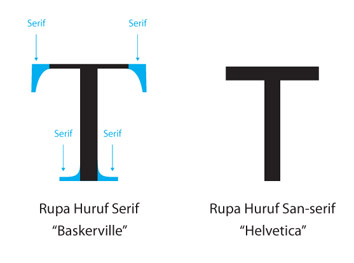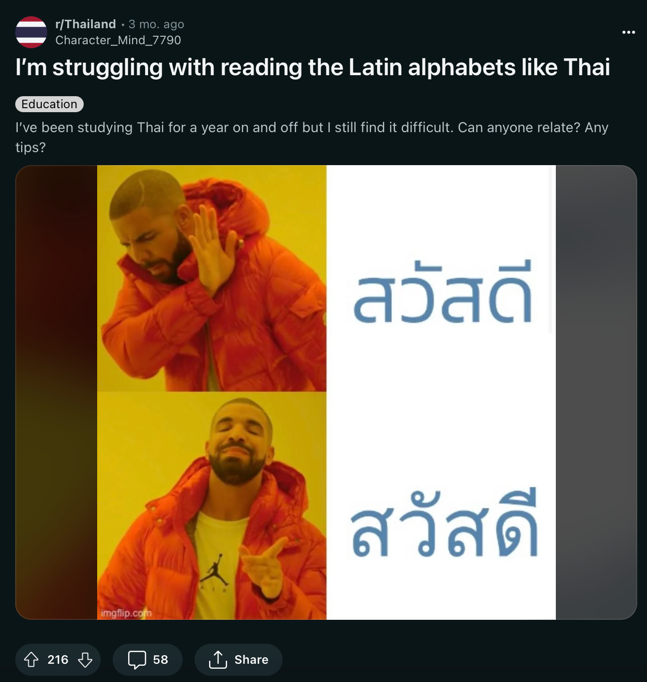Inclusive font design
One of my colleagues is recently reading this book A11Y Unraveled: Become a Web Accessibility Ninja . I got to skim it very fast in the office and found it very interesting.
One of its all very contentful chapters discussed how designs could obstacle people of dyslexia and autism; for example, having text overlaying illustration is not good design because it is harder to read.
Similarly, font design can affect the readability as well. According to the book, Sans-serif fonts appear to be more friendly for dyslexia.

(Source: Wikipedia - image captioned in Indonesian)
This triggered my thoughts for Thai languages. There are two prevailing fonts that are commonly seen in Thailand. One is the standard way which contains a lot of circles, and the other one is more simplified yet to me much harder to read. The simplified font is called headless font and sometimes looks like English.
This post on Reddit explains the difference between those two fonts.

(Source: Reddit: r/Thailand )
As this post has also pointed out, this headless fon this especially hard for Thai language learners. It is not a complete struggle for me, perhaps because I learned and practiced writing, but I still read this font much slower than the standard font.
This made me wonder, what is the factor that makes a font more inclusive? Is Sans-serif font in English more inclusive because it’s visually neater, or it is psychologically closer to how people learned writing? As if the same principle applies to all languages, headless font would be more inclusive if the former, otherwise standard font if the latter, even though the standard font looks more complicated.
I am interested to find out more researches about this.